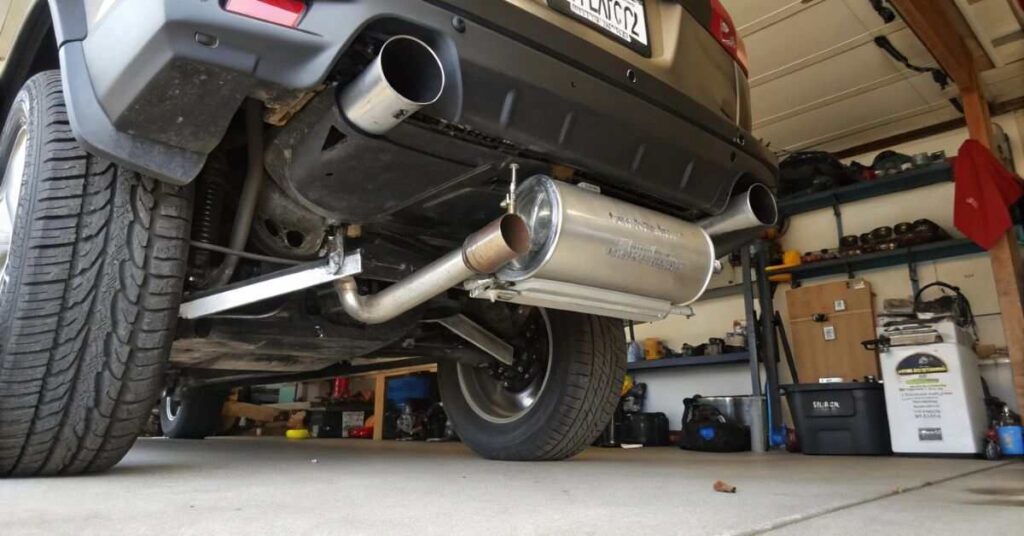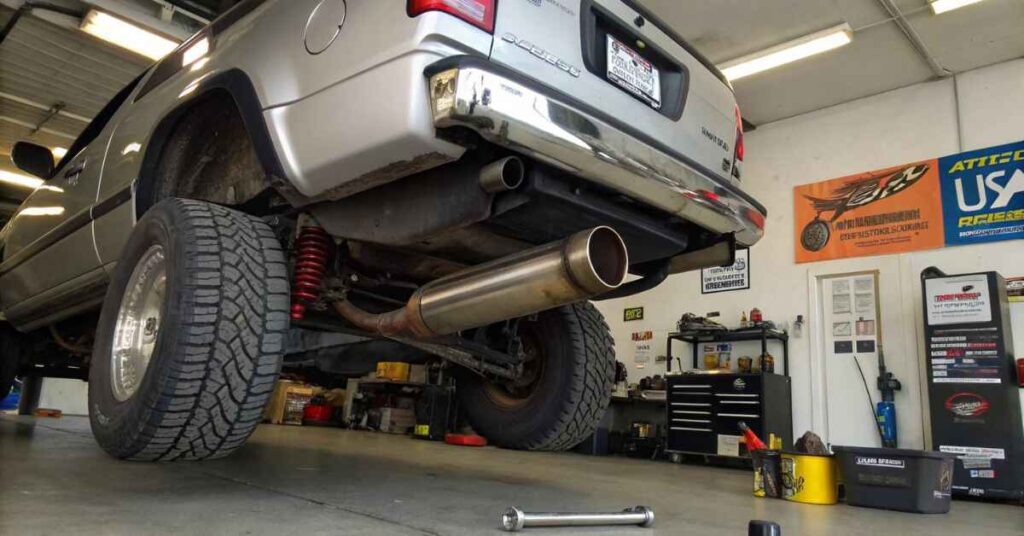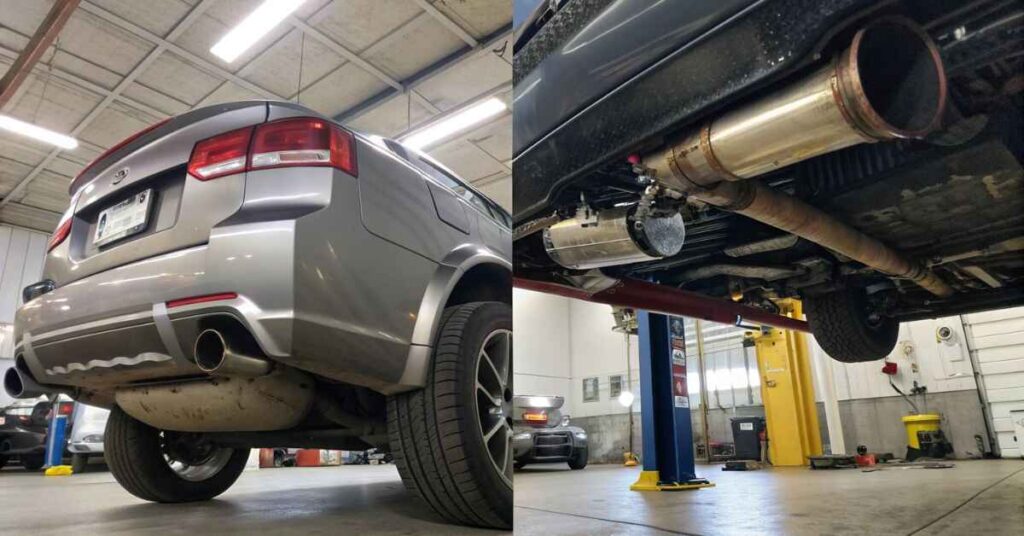
If you’re a car enthusiast looking for ways to make your vehicle sound louder and more aggressive, you might have come across the term “muffler delete.” But what is a muffler delete, and is it the right modification for your car?
In this detailed guide, we’ll break down everything you need to know about muffler deletes, including how they work, their pros and cons, legality, costs, and much more. By the end of this article, you’ll have all the information you need to decide if a muffler delete is worth it for your vehicle.
What Is a Muffler Delete?
A muffler delete is a modification that removes the muffler from a vehicle’s exhaust system, replacing it with a straight pipe. This results in a louder, more aggressive exhaust sound since the muffler’s noise-reducing function is eliminated.
Some car enthusiasts choose a muffler delete for a sportier tone and slight weight reduction. However, it may lead to legal issues, excessive noise, and potential performance changes. Always check local regulations before removing your muffler to avoid fines or restrictions.
Key Effects of a Muffler Delete:
1. Increases Sound:
Removing the muffler allows exhaust gases to exit freely. This results in a louder, deeper, and more aggressive exhaust note. Many car enthusiasts prefer this modification for a sportier sound.
2. Reduces Backpressure:
The muffler creates resistance that slows exhaust flow. A muffler delete removes this restriction, allowing gases to escape faster. This can lead to slight performance improvements in some vehicles.
3. Lowers Vehicle Weight:
Mufflers are made of metal and can be heavy. Removing it reduces overall vehicle weight, improving efficiency. For performance cars, this weight reduction can be beneficial.
Pros and Cons of a Muffler Delete:
Pros:
Louder and Sportier Sound:
Eliminates sound restrictions, producing a deep, aggressive tone. Enhances the driving experience for car enthusiasts. Ideal for muscle cars, sports cars, and modified vehicles.
Slight Performance Gains:
Reducing back pressure allows exhaust gases to flow more freely. This can lead to a minor increase in horsepower and throttle response. Works best on turbocharged or high-performance engines.
Weight Reduction:
Mufflers are bulky and add unnecessary weight. Removing them slightly improves the vehicle’s power-to-weight ratio. Beneficial for performance-oriented driving.
Cost-Effective Modification:
A muffler delete is cheaper than installing a full aftermarket exhaust system. Simple to perform at a shop or as a DIY project. No need for expensive replacement parts.
Cons:
Excessive Noise:
Can be too loud for daily driving, especially in residential areas. May lead to hearing fatigue or discomfort on long trips. Not ideal for those who prefer a quieter ride.
Legal and Environmental Issues:
Many states have noise regulations that ban muffler deletes. Failing an emissions or noise test can result in fines. Removing the muffler does not improve emissions control.
Loss of Low-End Torque:
Some vehicles experience reduced backpressure, affecting low RPM power. May cause sluggish acceleration in everyday driving conditions. Performance gains depend on the engine type and tuning.
Possible Engine Warning Lights:
Modern cars use sensors to monitor exhaust flow. A muffler delete may trigger a check engine light. In some cases, additional tuning is needed to prevent issues.
Is a Muffler Delete Legal in the USA?

The legality of a muffler delete in the USA varies by state and local noise regulations. In many states, removing the muffler is illegal because it increases noise levels beyond legal limits. States like California, New York,
and Texas have strict laws against loud exhaust modifications, and violators may face fines or failed inspections. However, some areas allow muffler deletes if the noise stays within legal limits. Always check local laws and emissions requirements before performing a muffler delete to avoid legal trouble and potential penalties.
States Where Muffler Deletes May Be Allowed (With Restrictions):
1. Florida:
Florida does not have a specific statewide ban on muffler deletes, but noise levels must comply with local ordinances. If the exhaust is deemed excessively loud, law enforcement can issue fines or require modifications. Some counties, especially in urban areas, have stricter regulations. Always check local rules before performing a muffler delete.
2. Arizona:
Arizona allows muffler deletes, but the vehicle’s noise must not be excessively loud. Law enforcement officers can issue citations if the exhaust exceeds acceptable limits. In cities like Phoenix and Tucson, emissions testing is required, and vehicles must meet environmental standards. If a muffler delete increases emissions, the car may fail inspection, leading to penalties.
3. Nevada:
Nevada does not explicitly ban muffler deletes, but noise regulations still apply. Vehicles must pass sound level checks, especially during annual inspections. While rural areas have more relaxed rules, Las Vegas and Reno enforce stricter noise laws. A muffler delete that significantly increases noise levels can lead to fines or failed vehicle inspections.
4. Montana:
Montana has relatively relaxed laws on muffler modifications, especially in rural areas. However, vehicles must not produce “excessive or unusual noise” that disturbs the public. While law enforcement is less strict in remote regions, urban areas may have specific noise restrictions. It’s always advisable to check local regulations before removing the muffler.
How Much Does a Muffler Delete Cost?
The cost of a muffler delete depends on factors like vehicle type, labor costs, and location. On average, prices range from $50 to $300. A DIY muffler delete is the cheapest option, costing around $50 to $150 for materials like a straight pipe and clamps. However, it requires tools and basic mechanical skills. If done professionally, expect to pay $100 to $300, including labor and parts. Additional expenses may include exhaust tips, resonator deletes, or ECU tuning, which can increase the total cost. Before proceeding, check local laws to avoid fines or legal issues.
How to Do a Muffler Delete (Step-by-Step Guide)?
1. Gather Tools and Safety Equipment:
Before starting, ensure you have the necessary tools, including a wrench set, saw or pipe cutter, jack stands, and protective gloves. Safety is crucial, so wear eye protection and work in a well-ventilated area. Lifting the vehicle securely with jack stands will provide better access to the exhaust system.
2. Locate and Remove the Muffler:
Find the muffler under the car, usually near the rear of the exhaust system. Use a wrench to loosen the clamps or bolts securing it in place. If the muffler is welded, a pipe cutter or saw may be needed to carefully remove it. Be cautious to avoid damaging surrounding exhaust components.
3. Install the Straight Pipe Replacement:
Measure the gap left after removing the muffler and cut a straight pipe to fit. Secure it in place using clamps or welding, ensuring a tight connection to prevent leaks. Double-check that the pipe is aligned correctly with the rest of the exhaust system before tightening all fasteners.
4. Test and Adjust the Exhaust System:
Start the engine and listen for leaks or unusual noises. If there are air leaks, tighten the clamps or apply exhaust sealant to ensure a secure fit. Once everything is properly installed, lower the vehicle and take a test drive to check the sound and performance changes.
Does a Muffler Delete Increase Horsepower?
A muffler delete can slightly increase horsepower, but the gains are usually minimal. By removing the muffler, exhaust gases flow more freely, reducing backpressure. This can improve engine efficiency and throttle response, leading to a small power boost of around 5 to 10 horsepower, depending on the vehicle.
However, the impact is more noticeable on turbocharged or high-performance engines. For significant horsepower gains, additional modifications like a full performance exhaust system and ECU tuning are recommended instead of just a muffler delete.
Muffler Delete vs. Resonator Delete: What’s the Difference?

1. Muffler Delete:
A muffler delete removes the muffler, making the exhaust much louder by eliminating sound-dampening components. It increases exhaust flow slightly but may cause drone, excessive noise, and legal issues in some areas. While it can improve sound and reduce backpressure, it doesn’t significantly boost performance.
2. Resonator Delete:
A resonator delete removes the resonator, which is designed to reduce certain sound frequencies. This results in a deeper, more aggressive exhaust tone but without as much loudness as a muffler delete. It has minimal impact on performance and is often combined with other exhaust modifications.
FAQs:
Is a Muffler Delete Bad for Your Engine?
A muffler delete won’t damage the engine, but it can reduce low-end torque and fuel efficiency. It also increases noise and may cause exhaust leaks if not properly installed. While it doesn’t harm performance significantly, drivability may be affected.
Will a Muffler Delete Cause a Check Engine Light?
A muffler delete usually won’t trigger a check engine light, but some modern cars may detect changes in exhaust pressure. If the vehicle has a valve-controlled muffler, removing it might require an ECU tune to prevent warning lights or engine codes.
Can a Muffler Delete Be Reversed?
Yes, a muffler delete is reversible by reinstalling a muffler. If it was cut off, welding or clamping a new one is required. Some cars use bolt-on muffler delete kits, making reinstallation easier, but professional help may be needed for proper fitting.
Will a Muffler Delete Pass Emissions Tests?
A muffler delete doesn’t increase emissions, but it may fail inspections due to noise regulations and visual checks. States like California and New York have strict laws, and vehicles missing a muffler may automatically fail state-mandated emissions or safety tests.
Final Thoughts:
A muffler delete is a great modification for those who want a louder exhaust sound without spending a lot of money. However, be aware of legal restrictions, noise levels, and possible performance impacts before making your decision.
Also Read:




